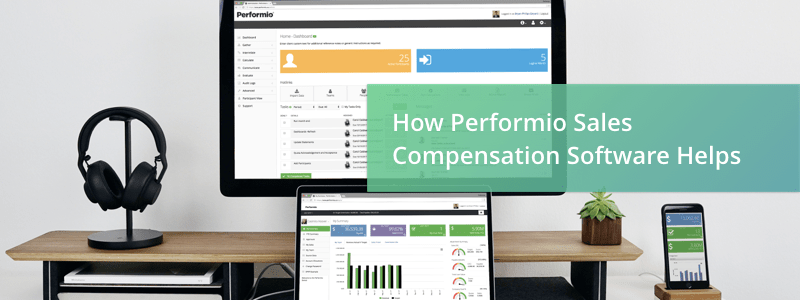In terms of setting expectations, sales targets send a clear message about what it takes to be a paid-up member of the sales team.
Setting Quotas And Targets For The High-Performance Sales Force
Most C-Suite Executives stretch the company sales target. It feels more comfortable because the added fat mitigates the risk of missing the forecast revenue. In some cases, each executive secretly adds their own bit of fat so the target becomes bloated. This target is then palmed off to the sales team who wonder how they will ever achieve it.
This is not an effective way to drive the performance of the sales team. An over-inflated target will disengage the sales team and increase the risk of underperformance. But a soft target will not challenge or inspire the team to perform at their best.
Why Target setting is not forecasting
Target setting is not the same process as sales forecasting and budgeting. The purpose of setting targets is to break down the sales forecast to an individual level for participating salespeople. It also makes the process easier to administer if you don’t get caught up in the issues surrounding business planning and budgeting.

Types of Quotas
Company “P&L” Quotas
These targets are related to the company income figure in the profit and loss statement.
Examples include:
- Revenue targets
- Sales Order Value (S.O.V.)
- Gross Margin which are variations in revenue and sales order targets, for example, the margin value of S.O.V.
Company “P&L” targets require a robust top down, bottom up target setting methodology. That is, to achieve the company’s forecast revenue for the year, individual sales targets must roll up to the same figure (or higher).

Performance Quotas
Performance targets are easier to set because they relate to an established benchmark or company goal. Performance targets allow you to integrate qualitative messages, such as your Objectives & Key Results (OKRs) into your commission plan.

Examples include:
- Net Promoter Score of 45%
- Demonstrate the product to five new customers per week.
How To Set Sales Quotas
You need to do three things right for your target setting process to go well:
- Get the numbers right by using an effective target calculation process
- Communicate the numbers effectively to the sales team
- Have a process to manage targets consistently during the sales year
How To Calculate Sales Quotas Effectively
How you calculate targets needs to be understood and executed consistently across the sales force. Your calculation process may never be perfect but the absence of a clearly documented target setting process will result in more conflict.
Think of target setting as a three-dimensional process:
- Metric Dimension: what performance metric are you using?
- Job Role Dimension: how is the target allocated per job role?
- Salesperson Dimension: how is the target allocated per salesperson?
How To Allocate Sales Quotas to Individual Salespeople
There are four ways to allocate targets to individual salespeople in each role:
- Headcount Approach
- Territory Sizing Approach
- Performance Benchmark Approach
- Salary Multiplier Approach
Head Count Approach
The headcount approach can work for Sales Order Value (S.O.V) metrics where the territory opportunity is generally regarded as equitable. The headcount count approach is not effective where territory opportunity varies significantly.
To use the headcount approach, you divide the global target by the number of full-time equivalent employees (FTE) in each role. You can then add layers of sophistication for seniority.
Example for New Business Executive Role
In this example, the company has three levels of New Business Executive:
- NBE I - Junior
- NBE II - Intermediate
- NBE III - Senior
The total Sales Order Value (S.O.V.) target for all New Business Executives is $87M. Using the headcount approach, the total target is broken down by seniority and the number of salespeople (FTE) at each level. The S.O.V. target allocated to each sales role sums up to the total S.O.V. target for all New Business Executives. Note, the most senior salespeople (NBE III) are allocated a higher target and would rightly expect to be remunerated accordingly.
| Role | FTE | S.O.V. Target | Total S.O.V. |
|---|---|---|---|
| NBE I | 10 | $2M | $20M |
| NBE II | 15.5 | $3M | $46.5M |
| NBE III | 5.5 | $4M | $22.5M |
| TOTAL | 20 | $87M |
Territory Sizing Approach
The Territory Sizing Approach is often used for Account Manager roles. Revenue is the sales metric most commonly used because it is naturally driven by the allocation of existing customers within the territory. This approach requires some massaging once all the territories have been allocated to ensure it rolls up accurately to the global target assigned to the role.
Example for Account Manager Role
In this example, the Account Manager looks after three accounts. She has been set a growth target of five percent.
| Accounts | Revenue Last Year | % Growth | Target This year |
|---|---|---|---|
| Plasters & Co | $45,003 | 5% | $47,253 |
| Smith & Son | $52,423 | 5% | $55,044 |
| Rogerson Ltd | $39,233 | 5% | $41,195 |
| TOTAL | $136,659 | $143,492 |
Performance Benchmark Approach
The performance benchmark approach is useful for new sales teams or start-up companies where there aren't many historical data to support a top-down territory sizing approach.
Examples For Start-Ups/New Sales Teams
- Look to your competitors to get a read on the size of targets - eg. “XYZ Corp targets their BDMs with a $1.2M sales quota.” Note: competition must be like for like for this approach to work.
- Set a ‘logo’ target. The target is simply for your sales team to sign up new businesses (logos). This approach clearly communicates what is required to the sales force. You can monitor average spend per customer and build up some historical data for year two where you might move to more of an S.O.V. target.
Salary Multiplier Approach
Another approach is to look at the employment cost of the salesperson then extrapolate a sales target that will deliver a profitable return to the company. This approach is commonly used by professional services firms.
Example Multiplier of Employment Costs
| Salary (at OTE) | $150,000 |
| Gross costs (incl insurances, superannuation etc) | $50,000 |
| TOTAL EMPLOYMENT COST | $200,000 |
| Gross sales margin | 50% |
| BREAK EVEN SALES | $400,000 |
| Add profit margin | 50% |
| SALES TARGET | $600,000 |
The Communications Plan
Fear of groans and moans from the sales force drive some companies to avoid communicating the sales targets in a planned and collaborative manner. In these companies, sales targets are lobbed at the sales team like an unexploded grenade while the senior leadership team duck for cover!
Clearly communicating the sales targets is critical to the company’s sales team so it’s important to do it right.

1. Involve Sales Managers in the quota setting process
Involving your Sales Managers will have two results:
- They will have ownership of the numbers.
- They will be able to explain to salespeople how the targets were derived.
2. Have a clear schedule
- Announce the date when sales targets will be made available.
- Provide a clear start date and end date for the consultation period.
- Give a cut-off date for negotiation to close and for the targets to take effect.
3. Have the difficult conversations
If you use our planned approach to target setting and you document your decisions and rationale, you will be well equipped to consult and effectively manage the difficult conversations.
- Have each Sales Manager schedule a one-to-one meeting with each of their team members.
- Provide Sales Managers with a breakdown of how targets were set and how they relate to each salesperson's total pay mix. Be mindful not to disclose the pay and targets of colleagues or you will cause unrest amongst the team.
- Allow the salesperson some time to reflect and respond to the conversation.
- Be prepared to listen and consider feedback from the sales team. If small concessions can be made to gain support without jeopardizing the company result then do so. But be mindful of equity. If concessions are made to one salesperson but not another it can cause conflict.
- Set a clear deadline for the salesperson to sign off on their target.
Ask Sales Managers to proactively raise the topic of targets with their team throughout the year one-on-one meetings and discuss any concerns with their team. Sharing grievances with the Manager is more professional than colleagues moaning around the water cooler.
Expect Gripes and Groans
Regardless of the target, expect push back from the sales team. Salespeople will complain because the target directly impacts their pay packet. Target setting is not an exact science. In a sales team of 100 people, expect some complaints even if you really have “nailed” the target setting. If you don’t receive complaints, you’re probably not trying hard enough.
How Performio Sales Compensation Software Helps

Automate Calculations
Setting targets using the territory sizing approach is data intensive. A tool such as Performio can automate that process. Customer and territory allocation data are pre-loaded so setting the target is just a matter of applying what percentage growth you expect for each account or territory.
Sign Off on Targets & Commission Plan
Performio’s Chat as Workflow allows you to capture sign off an acceptance of targets and commission plans from individual salespeople. This is particularly useful for large sales teams or if salespeople are geographically spread out.
Drive Performance
Performio uses dashboards to clearly show how each salesperson is performing against their target each week, month and quarter. This means you can constantly reinforce the goal but also the reward on offer if that goal is achieved or overachieved.
